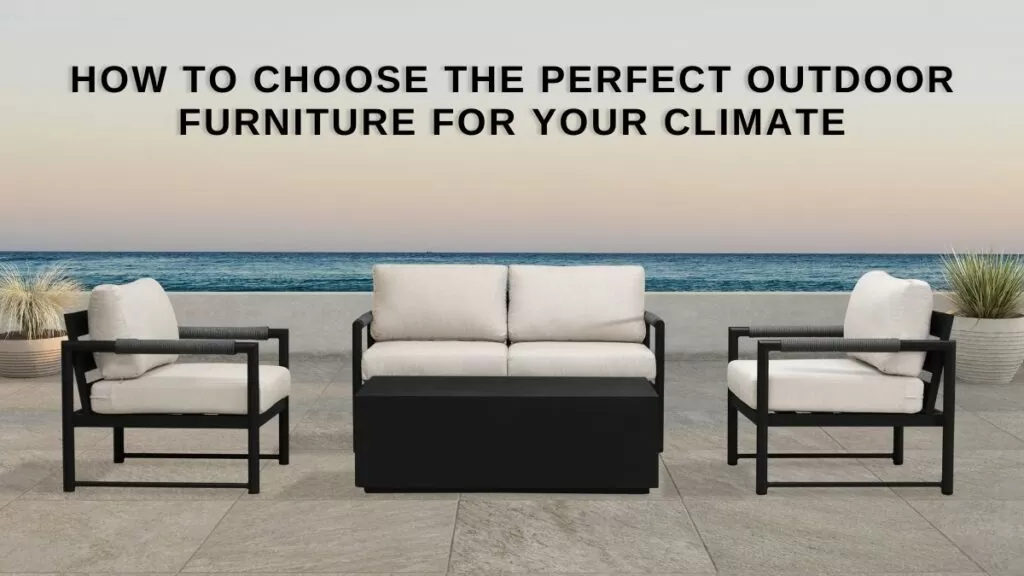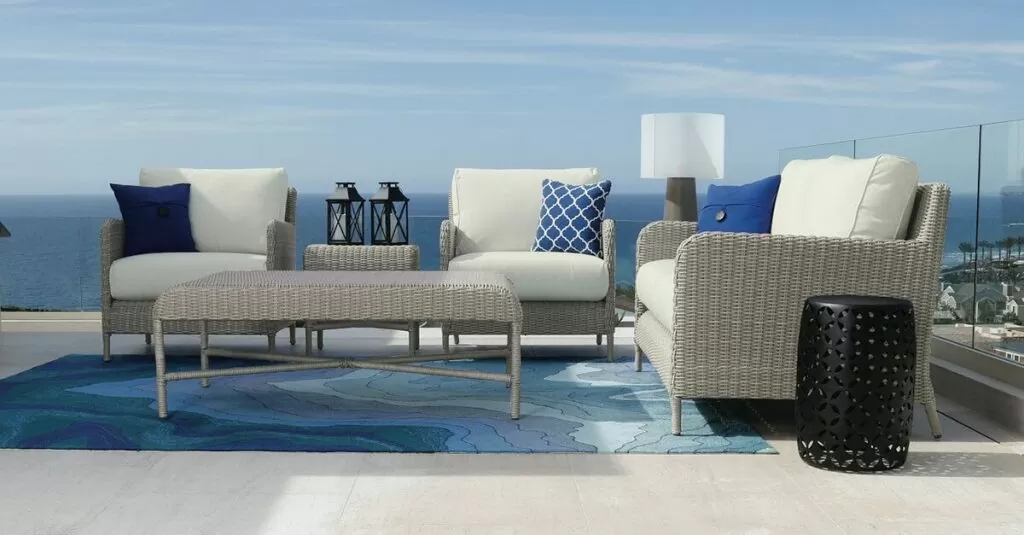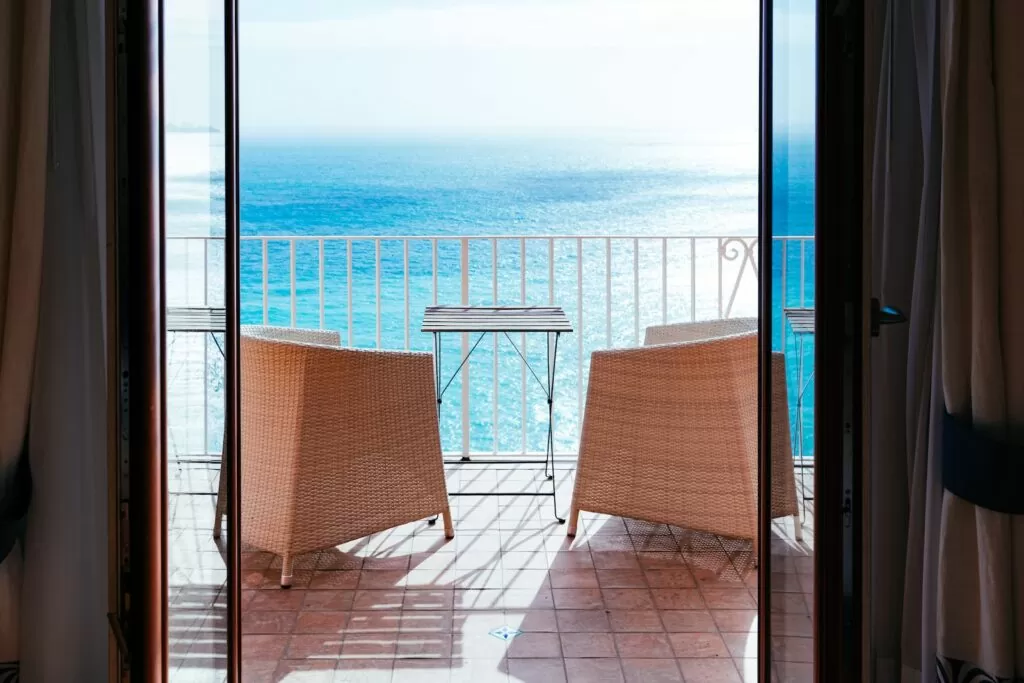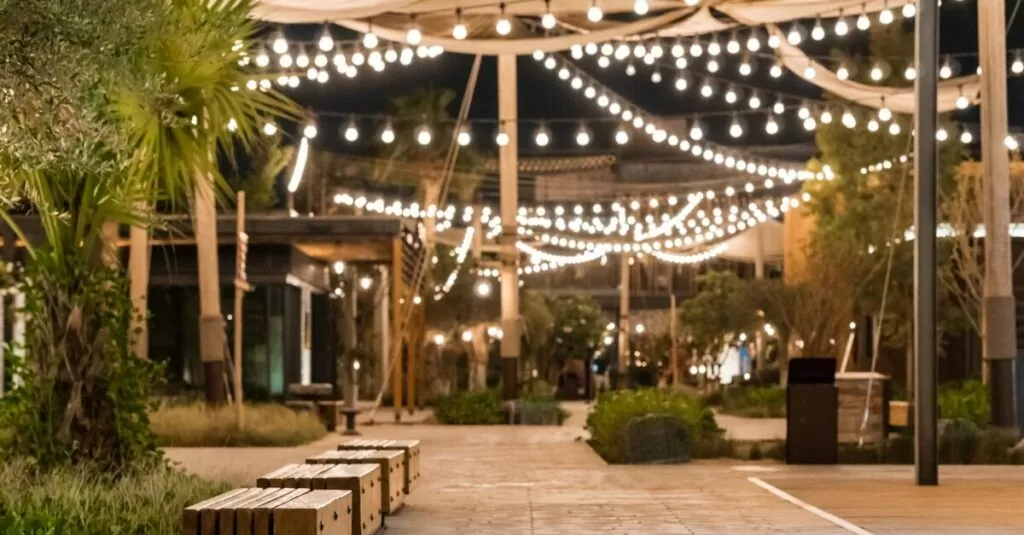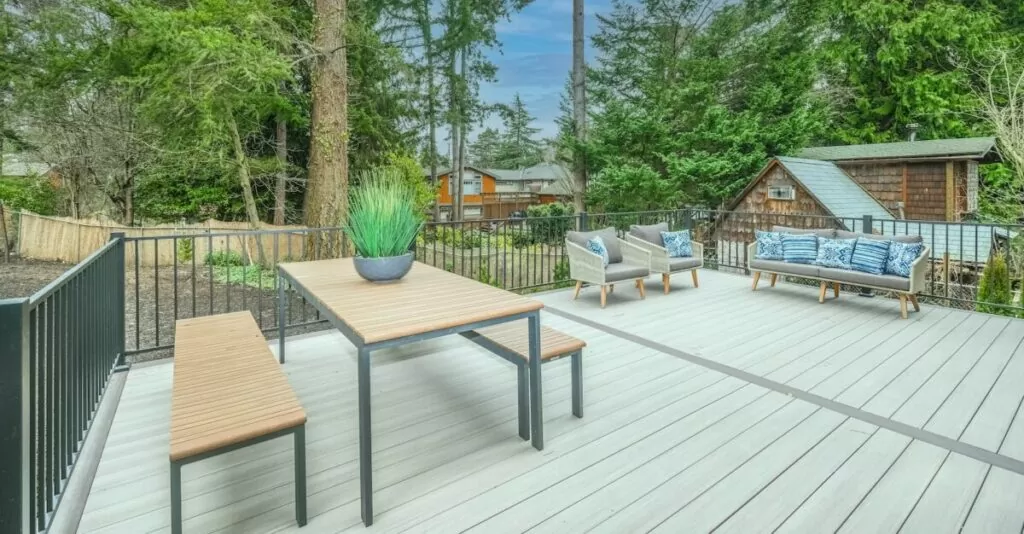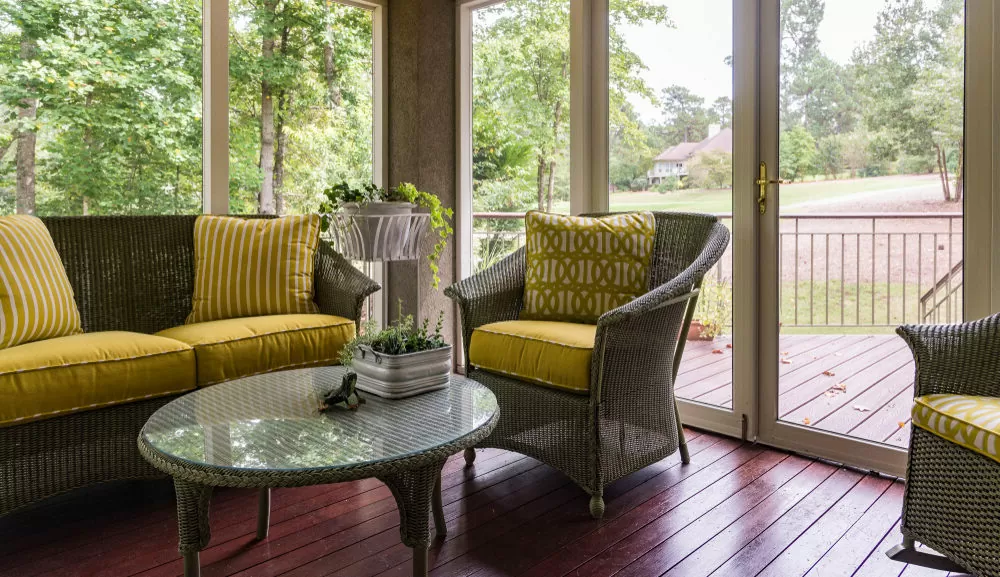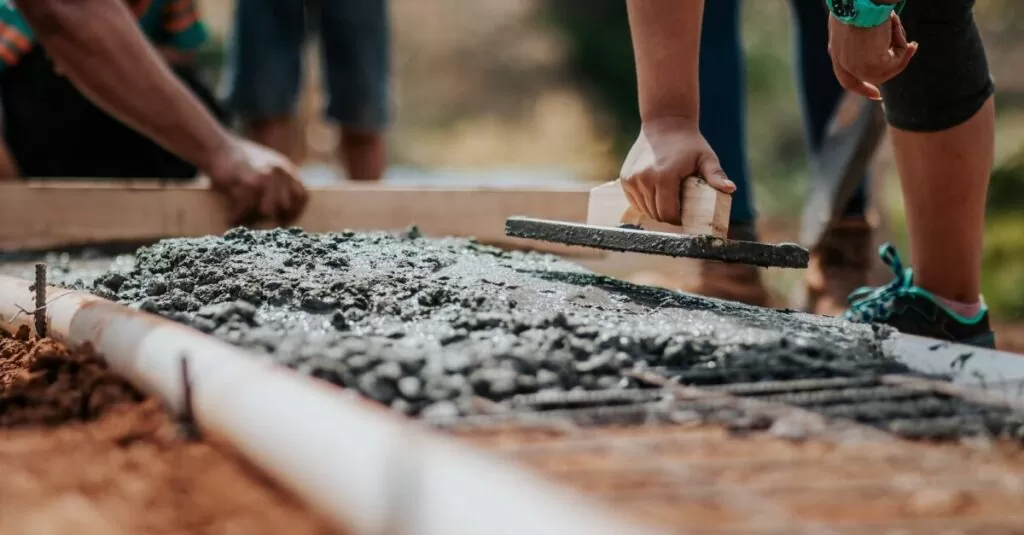The warm weather is coming and it’s time to get your Relax on. The transitional space between winter and spring is the perfect time to revamp your outdoor space with Patio Productions (you can read more in our article on the best reasons to buy patio furniture before summer). Obviously, if you’re going to be enjoying the great outdoors this season, you’re going to want to invest in some slick and sturdy patio furniture. But how do you choose the perfect furniture for your specific region and climate? Is your dry, arid environment going to wreak havoc on your backyard dining sets? Will your humid summer mountain air tear your patio sectional to shreds? Don’t worry! We’ve got you covered with all the answers to your questions, right here and now. We’re going to arm you with the knowledge you need to shop smart, and find the furniture that fits your particular biome best!
Evaluating Your Climate
When choosing outdoor patio furniture, evaluating your local climate is essential. The average yearly temperature and precipitation should be considered as well as seasonal weather events like hail or snow storms that could potentially damage the furniture. There are two main methods you can use to gauge the effects of your climate – comparative analysis or infrared thermometer readings.
Comparative Analysis:
Comparative analysis means looking at other regions with similar climates to extrapolate what sort of weather conditions yours may have. You can use online databases and newspapers to get an idea of the kind of storms and temperatures experienced by other similar climates. This is especially helpful if you don’t want to purchase instrumentation to provide more accurate measurements.
Infrared Thermometer Readings:
Using an infrared thermometer is another way to accurately gauge how hot or cold it gets in your area. This instrument measures temperatures by measuring the spread of radiated heat in the atmosphere, providing an accurate temperature reading for your region. This method will give you more detailed insights into seasonal temperatures, so you can make better decisions about the material used for your furniture sets.
Both methods should be used when evaluating your climate for purchasing outdoor furniture sets – comparative analysis can show potential weather patterns while infrared thermometer readings will help you understand temperature ranges on a day-to-day basis. Considering both will provide the most comprehensive picture possible and help you make informed decisions on which material is best suited for your environment.

Temperature & Weather Factors
When selecting patio outdoor furniture for your climate, temperature and weather conditions should be taken into account. Low temperatures during the winter will often require more protective materials such as metal or plastic, whereas furniture made of wood and resin wicker may be more suitable in warmer areas. In cold climates, frost-proof furniture should be chosen if possible to avoid damage from moisture. For example, aluminum frames are great choices because they are lightweight, durable and resistant to extreme temperatures.
Sunlight can also have an effect on furnishing materials over time. Plastic furniture usually fades with continued exposure to direct sunlight, while fabrics that are treated with UV protection are better suited in climates with intense sunshine. And if you live in an area with rain and sun, choose mold-resistant materials that can withstand rain and sun. Resin wicker is a popular choice because it offers good protection against both elements, as well as durability against harsh environments.
You must consider wind when selecting outdoor furniture as well. Windy climates require extra attention when choosing pieces so that they don’t blow away easily. Look for items with heavier weight or stylish stands that act as anchors to help keep chairs and tables in place.
Now that you understand the temperature and weather factors to consider when choosing patio furniture for your climate, the next section discusses protecting your pieces from the sun & rain.
In temperate climates, materials such as teak, cypress, cedar and eucalyptus are good choices as they are more resistant to rot, decay and insects.
In humid climates, resin wicker or synthetic outdoor fabrics usually perform better than natural fibers when exposed to moisture.
In arid, dry climates, aluminum and hardwoods can better withstand extended periods of sun and temperature changes.
Sun & Rain Protection
When it comes to choosing outdoor furniture for your climate, sun and rain protection are two critical aspects of the decision-making process. Sun protection is essential to protecting your furniture from harsh UV rays that can fade and damage the surface and fabric material over time. Ideally, you should opt for garden furniture pieces that have a built-in protective layer of either an acrylic based finish or polyurethane sealant. These protective layers help to minimize the risk of sun damage to the furniture and provide a longer lasting piece overall.
Rain protection, on the other hand, is equally important for humid or wet areas. If rainfall is common in your area, look for waterproof furniture materials such as wicker, rattan, and plastic. It’s also important to consider whether or not there is a chance of flooding in your area when selecting outdoor furniture in climate zones with heavy seasonal rains. In this case, raised or elevated furniture materials may be a better choice as they allow for water flow underneath and won’t beat risk of soaking up unnecessary moisture during periods of extreme wet weather.
If you live in a climate where both sun exposure and rainfall are frequent occurrences, opting for an outdoor furniture cover may be an attractive option. Outdoor furniture covers come in various sizes and shapes so you can find one that suits the exact measurements of your furniture and keep it protected from the elements all year long.
No matter which solution you choose, ensuring proper sun and rain protection will help prolong the life of your outdoor furniture and increase its level of comfortability throughout all types of climates. Arming yourself with this knowledge prior to purchasing is key in getting the most out of your summer investment.
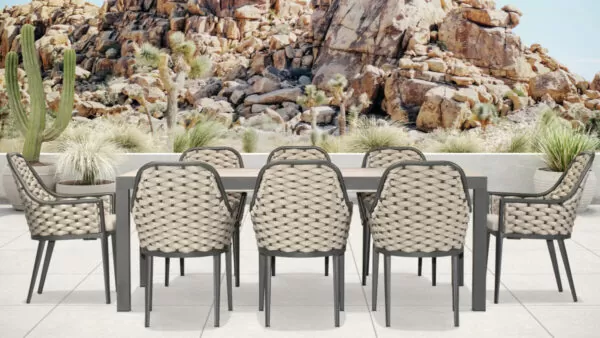
Must-Know Highlights
When selecting outdoor furniture for your climate, sun and rain protection are two key factors to consider. Opt for materials with an acrylic or polyurethane coating and waterproof materials such as wicker, rattan, and plastic for areas with high rainfall. Elevated furniture is also a good choice for regions prone to flooding. An outdoor furniture cover may be attractive option in climates that experience both sun exposure and rainfall. Following these tips will help prolong the life of the outdoor furniture and ultimately provide maximum comfort during all types of climates.
Buying Outdoor Furniture for Your Climate
When it comes to buying outdoor furniture, the climate can greatly impact the choices that a customer makes. Depending on the climate where the furniture will be bought, there are various elements to consider when deciding on the perfect piece for your backyard or patio. Those living in cooler climates will want to focus on durability and functionality whereas those in warmer regions will likely opt for styles that prioritize comfort and weather-resistance.
As far as durability goes, materials such as steel and wrought iron are generally best equipped to stand up to cooler climates while other materials like rattan and plastic are better suited to milder conditions. Additionally, higher quality outdoor fabrics with water repellent features will stay drier and less prone to fading for longer in cooler areas with unpredictable weather patterns. On the other hand, people living in a warmer climate can opt for softer materials that prioritize air flow and breathability, such as lightly woven synthetic wicker or mesh.
Serious consideration should be taken into account regarding how members of the household plan to use the furniture. If comfortability is paramount, then opting for chaise lounges or daybeds with thicker cushioning and an inviting style may be ideal for people looking for relaxation in their personal oasis. But if a bustling BBQ is more up your alley, then look for pieces that can withstand high traffic and plenty of plates crashing down on its surface – perhaps something made with teak or eucalyptus wood easy clean options, plus UV-resistant cushions and fabrics.
Click here to see our top selling teak patio furniture sets.
Selecting the Right Materials
When selecting the ideal patio furniture for any climate, consider the furniture’s material. Different materials can be more or less beneficial depending on the environment. Though there are countless options for the material of your outdoor furniture, some of the most common include wood, metals such as aluminum and steel, plastic, and wicker or rattan.
Wood may offer a classic and timeless look but can be susceptible to damage from rain and sun, so careful consideration must be taken when using wood outdoors in wet or sunny conditions. On the other hand, wood’s natural health benefits- such as its ability to repel dust and provide insulation may make it an ideal choice in some climates.
Metals such as aluminum and steel have become increasingly popular in recent years due to their versatility and durability. Aluminum is often used in furniture because of its light weight and anti-corrosive properties; it also requires minimal maintenance compared to other materials. Steel is known for its strength, but it does require careful maintenance to prevent rusting if exposed to frequent damp weather conditions. Both types of metal resist fading from sunlight better than many other materials.
Plastic is a great option for those looking for lightweight patio furniture with a modern style. It is generally considered one of the most affordable materials available. Its resilience also makes it suitable for climates with extreme temperatures; plastic will not crack like some other materials or deteriorate quickly in harsh weather conditions. However, plastic furniture is prone to fading over time so it should be placed out of direct sunlight or covered when not in use.
Wicker or Rattan may be ideal if you desire an aesthetically pleasing but durable material that works well in both sun and shade environments. This type of furniture is often hand-crafted and woven together from natural fibers like bamboo, sawgrass, rattan, reeds, or willow tree branches which adds unique texture to your patio area and offers superior stability during windy days. The downside of this particular material is that it can be much more expensive than other options due to its intricate weaving process.
When selecting the right material for your outdoor furniture, consider each option carefully based on your budget as well as your climate’s conditions before making a final decision. To ensure long lasting quality in any season, choose one that fits both your lifestyle and climate needs.
Click here to see our best aluminum patio furniture sets.
Choosing the Right Design
When choosing an outdoor furniture design, it is important to consider both your aesthetic desires and the practical requirements for keeping it in optimal condition during your local climate conditions. It is essential to recognize that different materials and designs lend themselves better to both hot and cold climates.
I like opting for natural materials, like wood, can provide a truly stunning backdrop against a patio setting, however, they are not as sturdy as some synthetic materials and require more maintenance when exposed to harsh weather conditions. Furniture made of plastic or other synthetic products can be more resilient in extreme overheating or cold spells, but they will often cost more upfront and be less aesthetically pleasing than their natural counterparts.
Finding the right outdoor furniture design needs to involve carefully assessing both your preferences and climate conditions. It is crucial to select a product that will best fit with both aspects so that you don’t have to face costly repairs down the line due to damage from the elements.
A good strategy is to start out by researching the various types of materials available on the market and then seeing which ones are most adaptable for your particular area’s climate. From there you can narrow in on more specific designs and make sure they fulfill all your requirements while still reflecting your style.
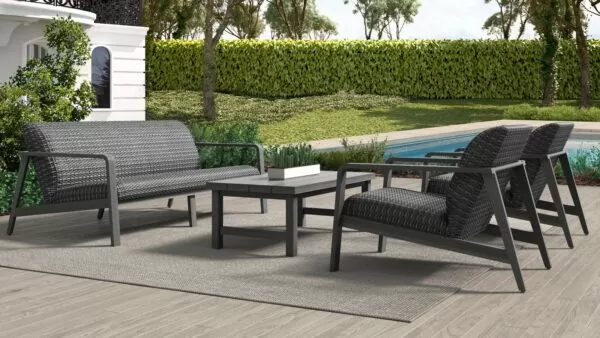
Outdoor Patio Furniture for Cold Climates
When choosing outdoor furniture for cold climates, finding the perfect balance of comfort and weight is essential. The best furniture is light, easy to move, and made to withstand harsh weather without sacrificing comfort. The material used in the furniture construction is equally as important; metal frames may offer great support, but they are likely to be very cold, which can become uncomfortable after a while. By using materials like resin with added padding, you can keep out some of the cold while still being able to move around when you need to.
Some homeowners may also opt for covered patio areas, which offer better protection against chilly winds and temperatures. Heaters and fire pits are also great options for making a space outside more comfortable during colder months. Alternatively, if there’s not room for covered patios or heating solutions, enclosed furniture such as dining sets with side panels can provide additional relief from the elements.
Next up, let’s explore how best to choose outdoor furniture for rainy climates…
Outdoor Furniture for Rainy Climates
Outdoor furniture for rainy climates is an important consideration as the climate will dictate how well the furniture stands up over time. Wood is a popular choice for outdoor furniture, but it can be vulnerable to the damaging effects of rain and humidity if it is not cared for properly. If you live in an area prone to inclement weather, choosing furniture that can withstand exposure to moisture may be worth investing in.
There are several materials ideal for rain-prone areas such as teak, eucalyptus, cedar and Ipe which are rot resistant and will stand up to a wet environment. These woods have natural oils that make them more resistant to rotting, water damage and fungal growth, but they still need to be sealed and treated for ultimate protection. Alternatively, synthetic materials such as vinyl, plastic or wrought iron are also great options because they are less likely to warp or corrode when exposed to moisture.
On the other hand, some people argue that wood is not necessarily a bad option in rain-prone climates as long as proper maintenance routine is set in place and the wood finish is well-protected (with polyurethane or tung oil sealant). With careful preparation, wood furniture can perform excellently outdoors even if it gets wet. However, it is recommended that when choosing wooden furniture, choose ones that Dry-Rot Resistant woods like Teak, Cedar, Cypress and Redwood with high oil content properties which better suits rainy climates than tropical hardwoods like Eucalyptus. Furthermore, all woods need periodic maintenance such as sanding and cleaning followed by recoating to keep them conditioned and looking good year after year.
No matter the material chosen for outdoor furniture in a rainy climate, extra care should be taken when placing outdoor cushions or pillows on outdoor furniture. Cushions should have air holes so water does not accumulate underneath them and mildew doe not form on them. Additionally, cushion covers should be waterproof and machine washable as this will extend their lifetime significantly compared to non-waterproof materials.
Rainy climates create different considerations that should be addressed when selecting outdoor furniture so it can last longer despite being constantly exposed to moisture. With careful selection one can find the right combination of materials that suit their specific climate needs while also making sure the necessary steps are taken in order to ensure their furniture remains looking good over many years of use avoid frequent replacements due to weather damage.
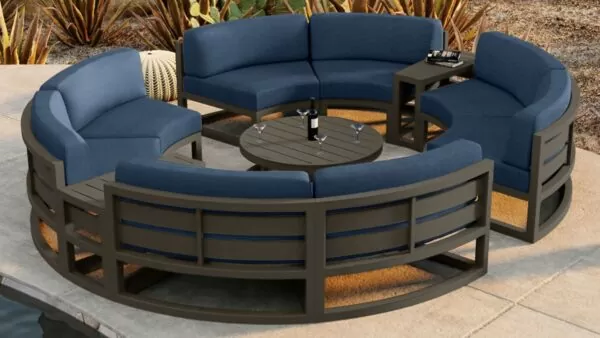
Patio Furniture for Sunny Climates
When it comes to selecting outdoor furniture for sunny climates, the key is to consider both functionality and durability. Avoid items made from materials that will quickly fade or crack from sun exposure. Choose furniture that can stand up to long-term use and regular exposure to strong UV rays.
When shopping for durable pieces, look for items constructed from sturdy woods like teak, eucalyptus, and cedar. All naturally resist insect damage and weathering, making them ideal materials for sunny climates. Metal frame pieces are also a great choice since they don’t absorb heat like wood does. Items made with wicker or synthetic rattan are more delicate and may require additional sunscreening when exposed to direct sunlight.
On the other hand, those looking for more comfort in their outdoor space may opt for UV-resistant cushions or pillows. Pieces covered with water-resistant fabric will last longer in humid climates. Sunbrella brand fabrics are specifically designed to repel water and maintain their vibrant colors under sunny skies.
No matter which type of outdoor patio furniture you choose, it’s essential to take proper care of your items to maximize their life span and keep them looking their best.
See our time tested wicker outdoor patio furniture collections here.
Optimizing the Lifespan of Your Outdoor Furniture
When it comes to optimizing the longevity of your outdoor furniture, there are a variety of factors to consider. To extend the lifespan of your investment, you must take into account how the furniture is made and what kind of weather conditions they will be exposed to in your climate.
Material Matters:
Depending on your region, select furniture that can resist UV light degradation and withstand whatever harsh elements come its way. Outdoor materials like steel, aluminum, wrought iron or all-weather wicker can survive all types of climates and continue looking good for far longer than other materials such as wood, which can corrode and warp over time due to humidity and moisture in some climates. Opt for products with powder coatings that prevent rusting, and ensure the frames are made from durable materials that won’t crack or break easily.
Weatherproof Cushions:
Select weatherproof cushions that use quick-drying foam cores or reticulated foam inserts and outer covers made from solution-dyed fabrics that won’t fade when exposed to intense sunlight or experience mold growth due to frequent rain. Look for outdoor furniture with velcro closures or buttons so you can easily remove the cushion covers when required and machine wash to clean them.
Protective Covers:
Protective covers are also essential for preventing dirt, moisture, mold and fading from intensifying your furniture’s wear-and-tear over time. Look for covers constructed from heavy-duty material like Polyester Oxford fabric as this is a waterproof barrier against bad weather.
Timely Maintenance:
Timely maintenance is critical if you want your outdoor furniture to last for a long period of time. Regularly inspect for signs of humidity caused by fluctuating temperatures, rust spots on the frame due to moist air or pollen accumulating on cushions. If issues arise clean away debris with a cloth or brush attachment on a vacuum cleaner and gently wipe down frames with soapy water or mild abrasive cleaner once a month or whenever necessary. Apply a coat of car wax monthly to protect metal and paint surfaces from chipping or peeling due to prolonged exposure.
So, there you go, now you are an expert on which furniture materials do best in which climates, and you know how to protect your investment to make it last as long as possible. You have all the tools you need to make smart shopping decisions and get the best patio furniture you can afford – and if you want to be just a smidge more prepared, we encourage you to read out article on the Best Patio Furniture Brands. Knowing the “Who” as well as the “What” and “When” will make you a more informed buyer. Good luck, and have fun!

Todd is a co-owner of Patio Productions and has worked extensively in the furniture industry since 2002, when he started a company that designed and manufactured bathroom vanities. He now has a hand in all online business operations, including keeping tabs on industry trends and making sure Patio Productions remains an innovative leader in the outdoor furniture space. He lives just outside of Denver, Colorado with his wife, two boys, and two dogs. They live on a lake where they can make the most of the outdoor lifestyle. His favorite patio furniture sets are his Harmonia Living sectionals.

